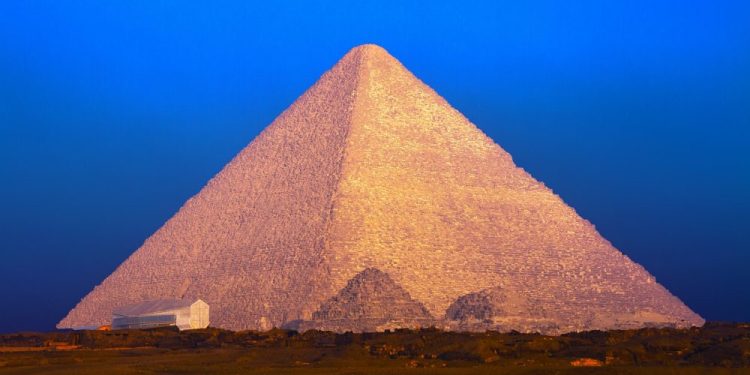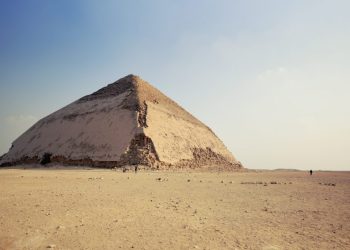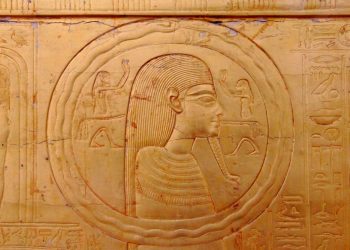Mainstream Egyptologists generally agree that Pharaoh Khufu built the Great Pyramid of Giza as his eternal resting place around 4,500 years ago. But is there physical evidence to back this up? And what if the Pyramid predates Khufu and his reign?
There are thousands of pyramids scattered across the globe. Ranging from smaller to massive pyramids rising hundreds of meters into the air, thousands of years ago, different cultures across the entire world built these majestic structures for reasons that remained shrouded in mystery even today.
No matter where we decide to look, we will probably discover pyramids.
The oldest pyramids in the world are those of Brazil, built around 5,000 years ago. Although not as sophisticated as their Egyptian counterparts, the Brazilian pyramids were constructed when people in Egypt had no clues about pyramid building techniques.
To the north, in Peru, people also erected pyramids. The ancient city of Caral is evidence of a pyramid-building civilization that developed more than 4,500 years ago, not far from the Nazca desert.
If we were to travel further north towards Central America, we would see pyramids there too.
Some examples are the Pyramids at the ancient city of Teotihuacan, or the largest Pyramid on Earth, the Great Pyramid of Cholula, built in the distant past near present-day Cholula, Puebla.
Travel towards the other side of the world to Asia, and there are pyramids there too.
For reasons we have not fully understood, ancient cultures built pyramids. Whether these structures were constructed as a show of power and ego or built for ceremonial or religious purposes remains a mystery.
While some pyramids may have had religious or ritualistic purposes, the pyramids of Egypt have been said to be no more than the royal tombs for the Pharaohs of Egypt.
The problem with this idea is that no single ancient text speaks of the pyramids and their exact date of origin. Furthermore, experts have failed to recover a single document that tells of the building techniques used by the ancient Egyptians to build these impressive structures.
Despite a lack of evidence, it is claimed that the pyramids of Egypt were around 4,700 years ago, and their purpose was to serve as the eternal resting places of the Pharaohs (and later Queens).
Mainstream Egyptology tells us that the first Pyramid of Egypt was commissioned by Djoser around 2,780 BC at the royal Necropolis of Saqqara.
It was there where Pharaoh Djoser ordered a young architect called Imhotep to build a monument like no other. Imhotep was Djoser’s royal Vizier and a man who had envisioned a much different future for Egyptian architecture than the one followed by Djoser and his ancestors.
Djoser eventually recognized Imhotep’s Talents and gave him free hands to build the monument. Imhotep did not disappoint. Mainstream scholars tell us that Imhotep would go on to build a square-shaped mastaba, which eventually, in a period of several years, turned into a superstructure. Imhotep added to the original mastaba every few years, expanding it to the sides and in height.
Eventually, the young architect would expand the structure so much that it turned into a kind of stairway to heaven, a Step Pyramid. The structure would finally be completed after Imhotep stacked six superimposed mastabas on top of each other. The Pyramid was then cased in finely polished white limestone, and the entire complex was surrounded by a massive wall.
This revolutionary construction is considered by leading Egyptologists the first Pyramid in Egypt. The dating of the Pyramid is roughly based on pottery fragments found at the site. That, however, should not be used as a guide to date what is considered Egypt’s first superstructure made entirely of stone.
In addition to that, the earliest experiments in radiocarbon dating were done on ancient materials from Egypt.
Willard F. Libby’s team obtained acacia wood from the 3rd Dynasty Step Pyramid of Djoser to date the structure. Libby is an American physical chemist noted for his role in the 1949 development of radiocarbon dating, a process that revolutionized archaeology and paleontology.
The idea that the Step Pyramid of Djoser results from tomb development in ancient Egypt mostly comes from the ancient Egyptian importance of the afterlife. Since life on Earth was just one part of the journey, it is argued that the Pharaohs of Egypt decided to build lavish structures to serve as their tombs.
The Step Pyramid of Djoser is considered one such extravagant structure, which, according to Egyptologists, initiated a Pyramid building mania in Egypt.
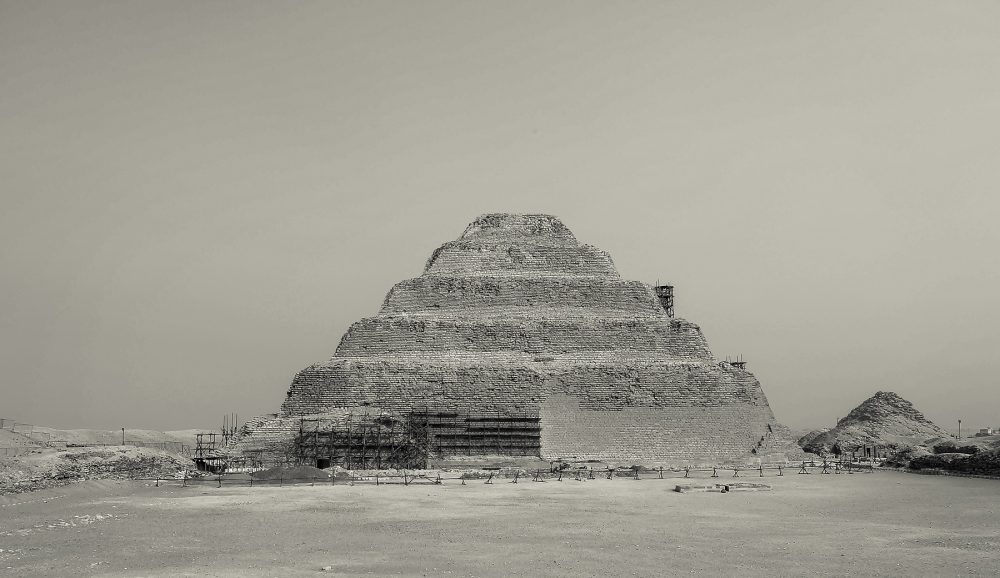
It is thought that structures that rise towards the heavens, like the Pyramid of Djoser, helped the pharaoh in the passage to the heavens. In other words, it acted as a gigantic stairway that allowed the Pharaoh’s Ka or soul to ascend into the afterlife.
The idea that the Pyramid served as tombs and portals to the afterlife endured, according to experts. Pharaohs that succeeded Djoser tried recreating the ancient wonder built by Imhotep at Saqqara, but it wasn’t until the Fourth Dynasty reign of Sneferu that another pyramid was built.
Sneferu is considered to have built three pyramids, one at Meidum and two at Dahshur.
These pyramids, too, were considered to have been erected as tombs. However, unlike Djoser, Sneferu further developed pyramids, eventually completing what Egyptologists consider to be the very first smooth-sided Pyramid of Egypt; the Red Pyramid at Dahshur.
Although it has been claimed that the Pyramid of Djoser was a tomb, and the three pyramids of Sneferu were also intended as such, never has the mummy of neither Djoser nor Sneferu been found.
To explain this oddness, Egyptologists argue that since the pyramids are so old, during one time in history, they were broken into, and everything from their interior was looted, including the mummified remains of the Pharaohs.
Pyramids that followed after Sneferu are also considered to have been built as tombs, following a strict timeline based on Cambridge Ancient History, 3rd ed.
Egyptologists tend to agree that Egyptian pyramid building techniques reached their peak when the Great Pyramid of Giza was built.
Egyptologists like Mark Lehner, Ahmed Fakhry, and others who are experts in their respective fields believe without hesitation that it was Khufu who commissioned the Great Pyramid of Giza.
Historical analysis assures, according to Lehner, that it was the ancient Egyptians who built the Giza Pyramids in a span of 85 years between 2589 and 2504 BC.
Back in 1984, Lehner and other experts in their respective fields conducted radiocarbon dating on material from Egyptian Old Kingdom (2686–2181 BC) monuments. They then compared the results with mid-point dates of the Pharaohs to whom the monuments belonged (Cambridge Ancient History, 3rd ed.). Curiously, the average radiocarbon dates were 374 years earlier than expected.
Despite this discrepancy, the experts claimed that radiocarbon dates reinforced that the Great Pyramid belonged to the historical period studied by Egyptologists.
Just as experts still don’t know how the Great Pyramid was built and everything we have related to its construction is no more than a hypothesis, the same oddity applies when trying to determine whether it was Khufu who commissioned the Pyramid.
One of the main reasons people doubt Khufu commissioned the Pyramid is that no known ancient texts date back from the reign of Khufu that speak of him building the Pyramid from start to finish.
Not one ancient text has been discovered that directly tells us: “It was Khufu who commissioned a Great Pyramid to be built, in that and that year…”
Based on a mark in one of the Pyramid’s chambers naming an alleged work gang with reference to Khufu, experts believe the structure belongs to the King that succeeded Sneferu in the Fourth Dynasty of ancient Egypt.
Other than that, there is very little evidence that directly connects Khufu to the Great Pyramid.
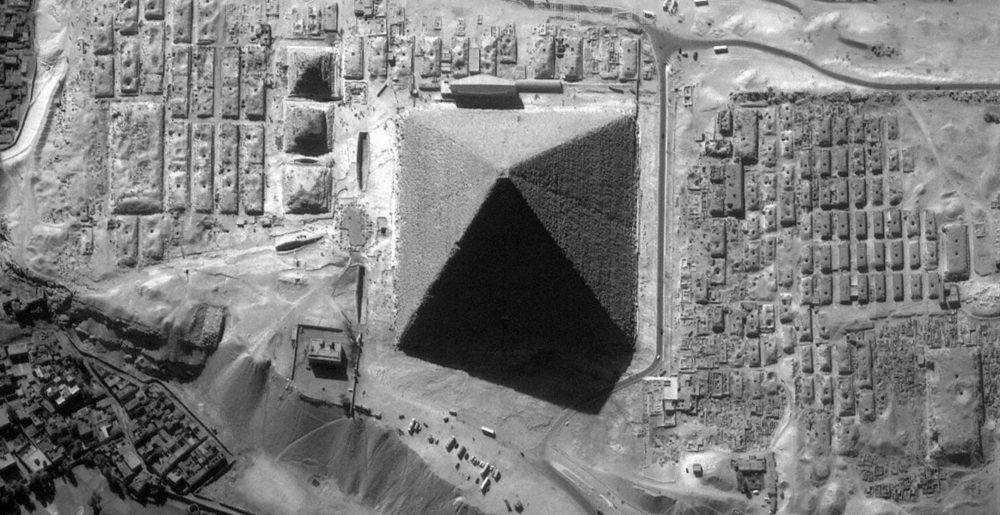
Strangely, the same can be said about Khufu’s predecessors and pyramid builders. There aren’t any ancient texts that connect Djoser to the Step Pyramid, nor are there texts that were recorded in ancient times that connect Sneferu to the three pyramids he is said to have built.
Take, for example, the Great Sphinx of Giza. It is an imposing statue and one of the largest carved monolithic statues on the planet’s surface. Yet, no written evidence exists whatsoever that can tell us who carved it, when it was carved, nor what its purpose was.
Despite this, Egyptologists generally agree that the Great Sphinx was commissioned by Khufu’s successor, King Khafre.
Mainstream scholars argue it was Khafre who commissioned the Sphinx and that the face of the Sphinx bears a resemblance to Khafre, despite the fact we don’t even know what Khafre looked like.
Early Egyptologists, pioneers in their fields, were not so convinced that it was Khafre who is responsible for carving the Sphinx.
“The date of the Granite Temple [Valley Temple] has been so positively asserted to be earlier than the fourth dynasty that it may seem rash to dispute the point,” wrote Flinders Petrie in 1883.
English Egyptologist E.A. Wallis Budge also thought the Sphinx was much older than what we are told.
“This marvelous object [the Great Sphinx] was in existence in the days of Khafre, or Khephren, and it is probable that it is a very great deal older than his reign and that it dates from the end of the archaic period 2686 BC,” wrote Budge.
Gaston Maspero, a French Egyptologist who conducted a survey of the Sphinx in 1886, would go on to state that because the Dream Stela showed the cartouche of Khafre in line 13, it was he who was responsible for the excavation.
Therefore the Sphinx must predate Khafre and his predecessors—possibly Dynasty IV, 2575–2467 BC.
Maspero believed the Sphinx to be “the most ancient monument in Egypt.”
If this is so, why is it that we are so convinced today that Khufu built the Great Pyramid of Giza and that the Pyramid of Khafre and the Sphinx were built around the same time in the fourth dynasty?
Join the discussion and participate in awesome giveaways in our mobile Telegram group. Join Curiosmos on Telegram Today. t.me/Curiosmos



